| Columns Retired Columns & Blogs |
Wavac SH-833 monoblock power amplifier Measurements
Sidebar 3: Measurements
"Perhaps I should just measure one of the amplifiers," I said, eyeing the eight chassis that comprise a pair of the Wavac SH-833 monoblocks, all of them sitting at the business end of Mikey's room. Even so, as neighbor Wes Phillips and I manhandled the 550 lbs of amplifier dead weight out of my wife's SUV—price new, one eighth that of a pair of SH-833s—and down the steps into my basement listening room and test lab, I thought I might institute a new rule: that Stereophile's writers review only components that they can lift—with one hand!
Once I'd set up the SH-833, connecting the six umbilicals that join the four chassis and carefully installing the bright-glowing 833 transmitter tube, I could get down to the business of characterizing the Wavac's measured performance, using its unbalanced RCA input. (The XLR input simply parallels the RCA, with pin 3 shunted to ground.)
With the Wavac's volume control all the way up, its voltage gain at 1kHz into 8 ohms was very high: 33.75dB from the 8 ohm tap, 32.4dB from the 4 ohm tap. Despite this high gain, the amplifier's A-weighted signal/noise ratio was excellent, at 87.5dB ref. 1W into 8 ohms. This figure worsened to 77dB when unweighted over a wide (10Hz-500kHz) bandwidth, due to the presence of some very-low-level hum. The input impedance was just below 100k ohms across the audioband—the input is taken to a 100k pot—and the amplifier didn't invert signal polarity.
The SH-833's output impedance was on the high side, at 5 ohms from the 8 ohm transformer tap and 2.6 ohms from the 4 ohm tap. These figures were maintained across most of the audioband, with a rise at 20kHz from the 4 ohm tap to 3.6 ohms. Unexpectedly, the 20kHz source impedance from the 8 ohm tap dropped from 5 to 4.3 ohms. This difference in top-octave behavior can be seen in the amplifier's frequency-response plots from the 8 and 4 ohm taps (figs.1 and 2, respectively). The amplifier's output from the 8 ohm tap (fig.1) tips up slightly between 20kHz and 40kHz (more so into lower impedances), whereas that from the 4 ohm tap rolls off into lower impedances, reaching -3dB at 18.5kHz into 2 ohms (fig.2).
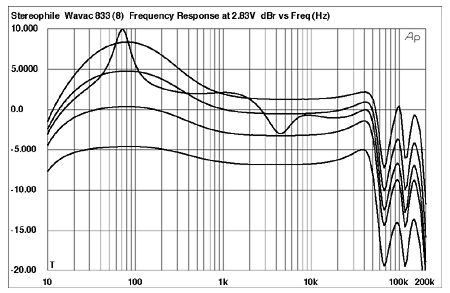
Fig.1 Wavac SH-833, 8 ohm tap, frequency response at 2.83V into (from top to bottom at 80Hz): simulated loudspeaker load, 16 ohms, 8 ohms, 4 ohms, 2 ohms (1dB/vertical div.).
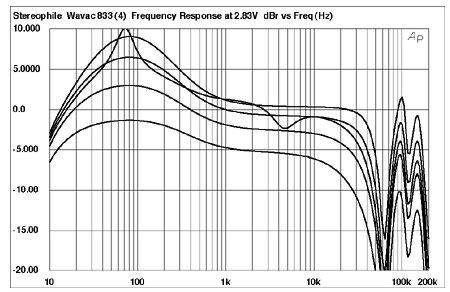
Fig.2 Wavac SH-833, 4 ohm tap, frequency response at 2.83V into (from top to bottom at 80Hz): simulated loudspeaker load, 16 ohms, 8 ohms, 4 ohms, 2 ohms (1dB/vertical div.).
This rolloff will be audible, but is not that important. What is subjectively important is the SH-833's behavior in the bass. As with another amplifier using a circuit developed by the late Shishido-san—the Antique Sound Lab Explorer reviewed by Art Dudley in March 2004—there is a bass boost, the amount of which depends on the output transformer tap, the source impedance, and the load impedance. In the worst case, 4 ohm tap into 16 ohms, the boost reaches 9dB between 80Hz and 160Hz, while in the best case, 8 ohm tap into 2 ohms, there is a broad plateau 2dB high between 30Hz and 200Hz. With our simulated loudspeaker load, the high source impedance and exaggerated low frequencies produce a well-defined, 10dB peak at the woofer's resonant frequency.
Even though MF used the 4 ohm tap with his WATT/Puppies, this equalization will undoubtedly be audible. Mikey says in his review that the Wavac's balance "sounded rich and warm," adding that the bottom end was "fuller" than he was used to. That is what I heard in his system, though it wasn't quite so much that the low frequencies were ponderous as that the high frequencies sounded plateaued down.
This low-frequency boost also manifests itself in the steep, upward slope of the tops and bottoms of a 1kHz squarewave (fig.3). What can also be seen in this graph is a degree of overshoot and ringing that correlates with the peaks apparent at 95kHz and 149kHz in the response graphs. This behavior can be seen in more detail in the SH-833's 10kHz squarewave response (fig.4). It is hard to predict what the subjective effect, if any, will be of these ultrasonic peaks, but it might well be possible that some loudspeaker loads will trigger instability.

Fig.3 Wavac SH-833, 8 ohm tap, small-signal 1kHz squarewave into 8 ohms.
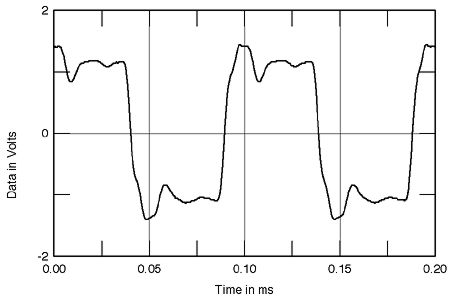
Fig.4 Wavac SH-833, 8 ohm tap, small-signal 10kHz squarewave into 8 ohms.
So, what about the SH-833's output capability power? Those 550 lbs and that humongous transmitter tube promise a lot of power, not to mention the specified "effective" output of 150W. As you can see from figs.5 and 6, which plot the percentage of distortion and noise in the Wavac's output against power from the 8 and 4 ohm taps, respectively, that promise is not kept. At our usual definition of clipping—1% THD+noise—the Wavac gives out just 2W or less into loads ranging from twice the nominal tap impedance to one quarter that nominal value. The highest power is obtained when the load is half the nominal tap—ie, from the 8 ohm tap into 4 ohms—but even then, the definition of clipping has to be relaxed from 1% to 10% for the amplifier to approach its specified power. Looking at the waveform on an oscilloscope during these tests, the point in these graphs when the waveform clips is actually the sharp notch in the traces. At 10% THD, the amplifier is putting out a pretty good squarewave!
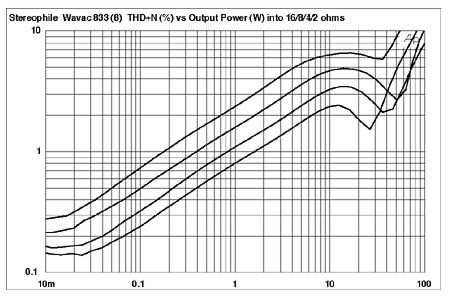
Fig.5 Wavac SH-833, 8 ohm tap, distortion (%) vs 1kHz continuous output power into (from bottom to top at 10W): 16 ohms, 8 ohms, 4 ohms, 2 ohms.
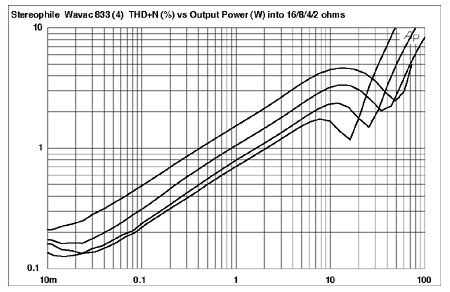
Fig.6 Wavac SH-833, 4 ohm tap, distortion (%) vs 1kHz continuous output power into (from bottom to top at 10W): 16 ohms, 8 ohms, 4 ohms, 2 ohms.
Note that the SH-833 becomes increasingly nonlinear with increasing power into all loads. Only between 10mW and 100mW does it produce what would conventionally be called "low" distortion. So why did the amplifier sound more linear than these measurements would suggest? The answer lies in the harmonic content of the distortion. At moderate power levels in the midrange, it is almost entirely pure second harmonic (fig.7). At 1%, the level is high enough that it will be just audible—hear for yourself, using the distortion tracks on Stereophile's Test CD 2. However, second-harmonic distortion, being musically consonant and close enough in frequency terms to the fundamental that there will be plenty of masking, is both relatively benign and can often be preferred to an undistorted signal, in that it sounds "fatter" and "warmer."
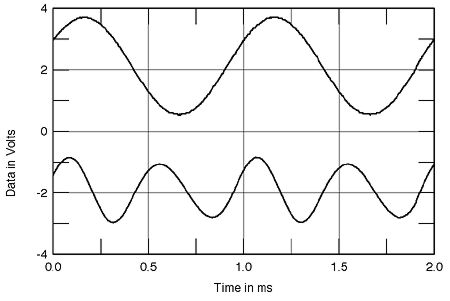
Fig.7 Wavac SH-833, 4 ohm tap, 1kHz waveform at 1W into 4 ohms (top), 1.08% THD+N; distortion and noise waveform with fundamental notched out (bottom, not to scale).
That other, higher harmonics are present can be seen in fig.8, which shows the spectrum of the Wavac's output while it drove 1W into 8 ohms from its 4 ohm tap. However, these are all below -60dB (0.1%), so may not play a role in contributing to the SH-833's sonic character for much of the time.

Fig.8 Wavac SH-833, 4 ohm tap, spectrum of 50Hz sinewave, DC-1kHz, at 1W into 8 ohms (linear frequency scale).
Interestingly, the low-frequency distortion decreases into lower impedances compared with higher impedances (figs.9 and 10). Note from these graphs that the amplifier is actually at its most linear just above the audioband. This correlates with what is relatively good performance on the high-frequency intermodulation test (fig.11). Yes, the level of the 1kHz difference component is reasonably high at -46dB (0.5%), but the higher-order components all lie below -63dB (0.07%).
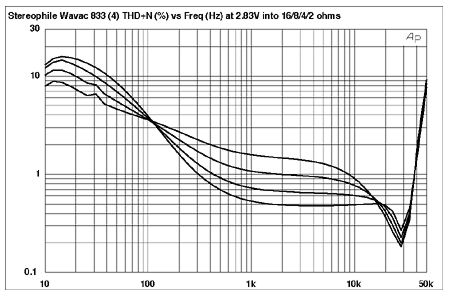
Fig.9 Wavac SH-833, 4 ohm tap, THD+N (%) vs frequency (from bottom to top): 2.83V into 16 ohms, 8 ohms, 4 ohms, 2 ohms.
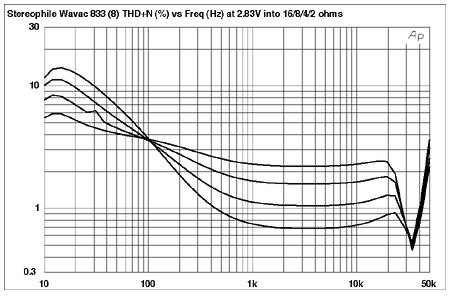
Fig.10 Wavac SH-833, 8 ohm tap, THD+N (%) vs frequency (from bottom to top): 2.83V into 16 ohms, 8 ohms, 4 ohms, 2 ohms.
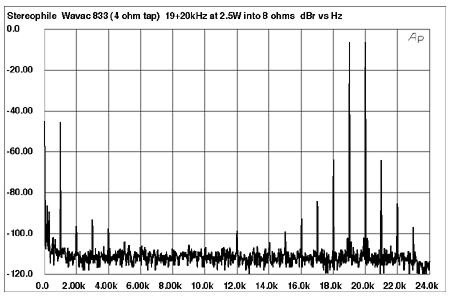
Fig.11 Wavac SH-833, 4 ohm tap, HF intermodulation spectrum, DC-24kHz, 19+20kHz at 2.5W into 8 ohms (linear frequency scale).
So, that's that for the Wavac SH-833. I can't explain why Michael found its sound so seductive; all I can do is point to the measurable problems or audible idiosyncrasies that must be listened through to hear what it does right. All I have to do now is work out how to get this mondo amplifier back out of my basement and into the SUV so that Mikey can spend another couple of weeks luxuriating in its sound.—John Atkinson
- Log in or register to post comments



































